Kupferman, the Landscape and I
January 28, 2020
The following journal of events leads up to Field of Vision, an exhibition at the Kupferman Collection in Kibbutz Lohamei Hagetaot. Its upcoming opening is also a kind of closure for me of many circles of activities and experiences (and perhaps the opening of new ones). Over a number of years I encountered the work of Moshe Kupferman (and the artist himself) and discovered surprising connections between it and the landscape.
January 2002
I’m driving in pouring rain from the Galilee to Jerusalem with my infant son (named Moshe) on my way to Artspace Gallery, where the exhibition A Common Thread: Artists Pay Tribute to Moshe Kupferman is on view, for a gathering with the artist. This intimate group show is being held parallel to the major solo exhibition Moshe Kupferman: Works from 1962 to 2000 taking place at the Israel Museum and curated by Yona Fischer. One of my paintings in the group exhbition is this landscape:
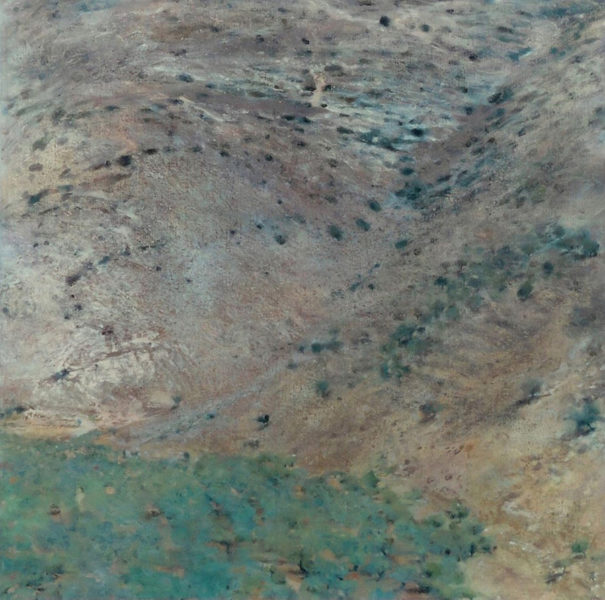
View from Shorashim 2, 2001, oil on canvas, 90 X 90 cm
After about fifteen minutes on the road I am defeated by the combination of the rain and the carsickness of my young companion, and take a u-turn back home. A photographer friend who participated in the gathering reported to me that Kupferman stood for a long time looking at my painting.
Winter 2003
Another rainy day, and I drive to Kibbutz Lohamei Hagetaot to see the Kupferman Collection, an exhibition space that opened about a year previously adjacent to the artist’s still active studio. I am the only visitor there, and when I look at this painting tears come to my eyes:

Moshe Kupferman, Untitled, 1987, oil on canvas, 194.5 X 130 cm
My strong connection to figurative painting notwithstanding, I am drawn inside the complex inner space of this painting, which in turn touches me in a deep place.
On my way out through the foyer I find Moshe Kupferman awaiting me. He asks who I am and invites me into his studio. He makes me a cup of tea and serves salty round cookies with it. We discuss art. I shyly attempt to tell him about my moving experience with his painting, and what a rare moment it was. I remind him of the Artspace exhibition but not of my painting (shyness again). On my drive south I am so excited by this meeting that I miss the turnoff west toward home.
June 2003
Moshe Kupferman dies. His studio is preserved as is and becomes part of the Kupferman Collection exhibition space.
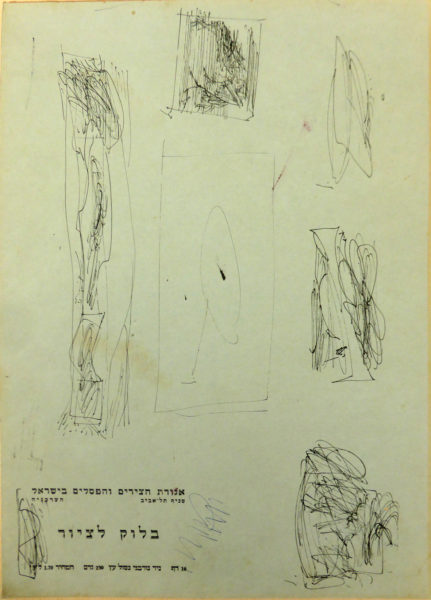
Moshe Kupferman, sketchbook cover, 1966, ink on paper, 34.7 X 24.7 cm
January 2016
The search for a research topic for my Master’s thesis in art history at the University of Haifa brings me back to the Kupferman Collection (after other visits in the years between). I ask if I may see what Yona Fischer called “sketch albums” (in the catalogue of the 2002 Israel Museum show among other places). Roni Ben-Dor (Ribush), collection director and Kupferman’s grandaughter, takes me into the archives, opens drawers and takes out piles of sketchbooks.
In sketchbooks from 1969 I come across many pages like this one, similar to the ones I saw in Fischer’s catalogue. At first glance they remind me of small landscapes:
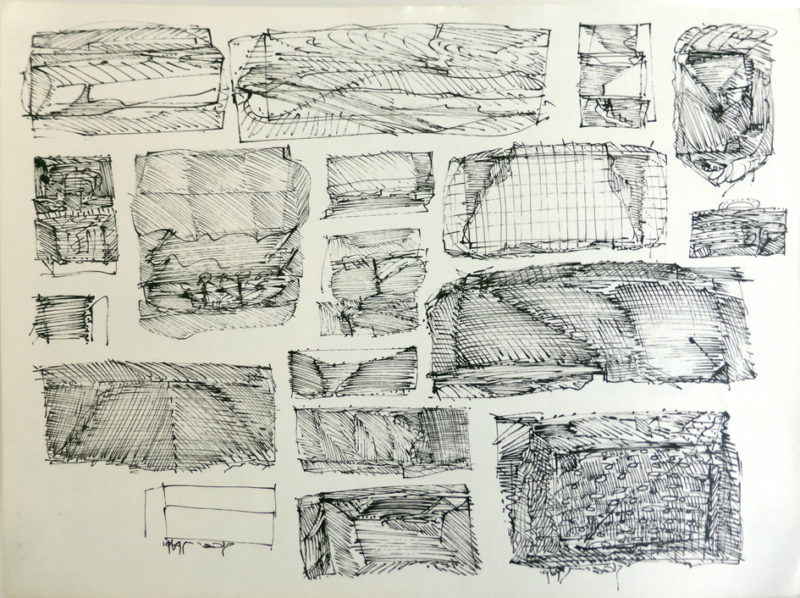
Moshe Kupferman, ink sketch, 1969, 24.7 X 34.7 cm
I then open sketchbooks from earlier years and am surprised to find them filled with landscape images.
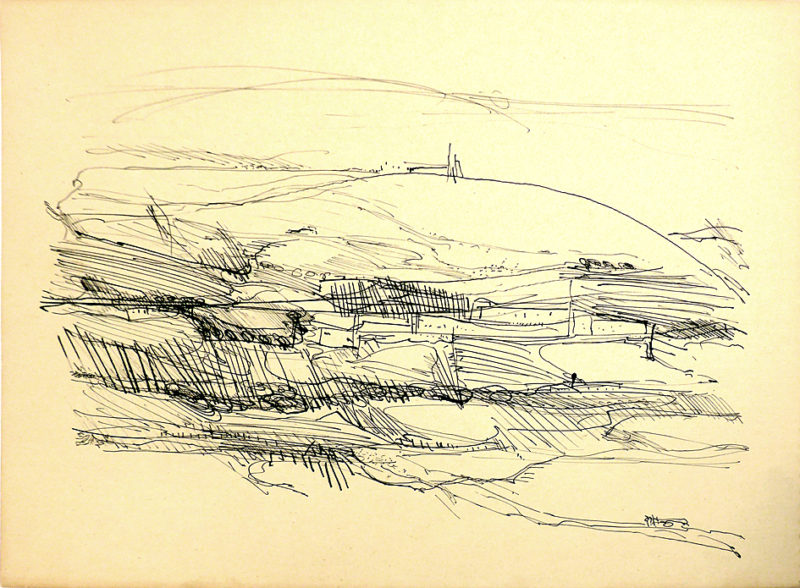
Moshe Kupferman, ink sketches, 1963, 1965, 1966
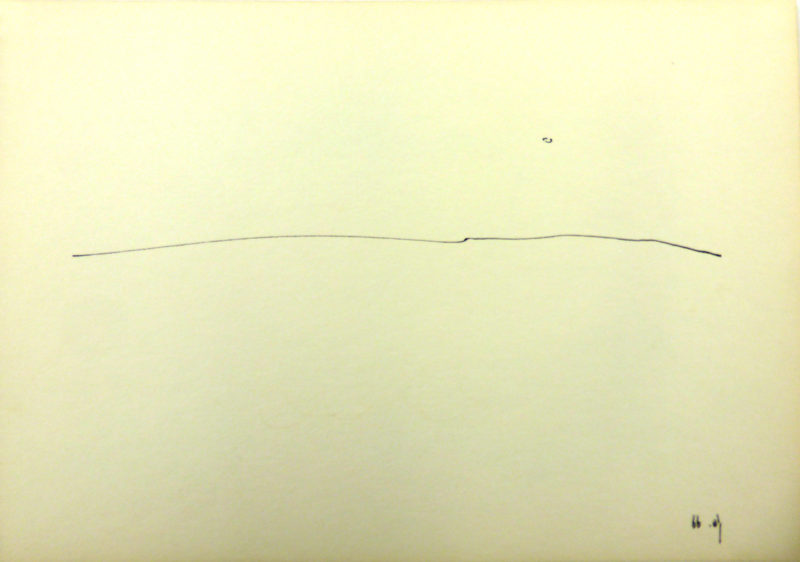

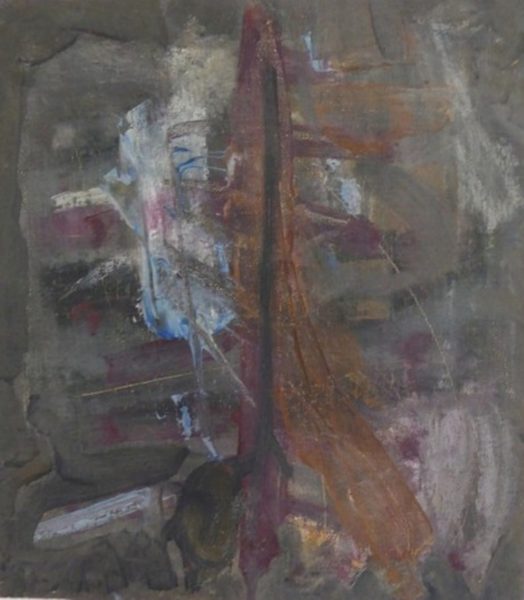
Moshe Kupferman, untitled, 1962, oil on canvas, 36.5 X 32 cm
Investigating the concurrence of landscape sketches with continued creation and exhibition of abstract paintings forms the first chapter of my thesis. I suggest viewing Kupferman’s early abstract paintings as stemming from portraiture, with their vertical format and central form in a flat or shallow space. The intensive work on landscape sketches contributed to a gradual yet dramatic change in Kupferman’s work, leading toward horizontal abstract paintings with an all-over composition of complex layers, like in the painting from 1987 which moved me so much – landscape-based abstraction.
November-January 2019
Curator Dalia Levin invites me to participate in Field of Vision at the Kupferman Collection, a group exhibition exploring contemporary responses to the landscape. In another room at the Collection I collaborate with Roni on a small display of Kupferman’s landscape sketches, for which I write a short exhibition text.
If in my research on Kupferman I identified a shift from a portrait-based pictorial structure to one based on landscape, the works I will exhibit in Field of Vision combine portrait and landscape (these two and one more);
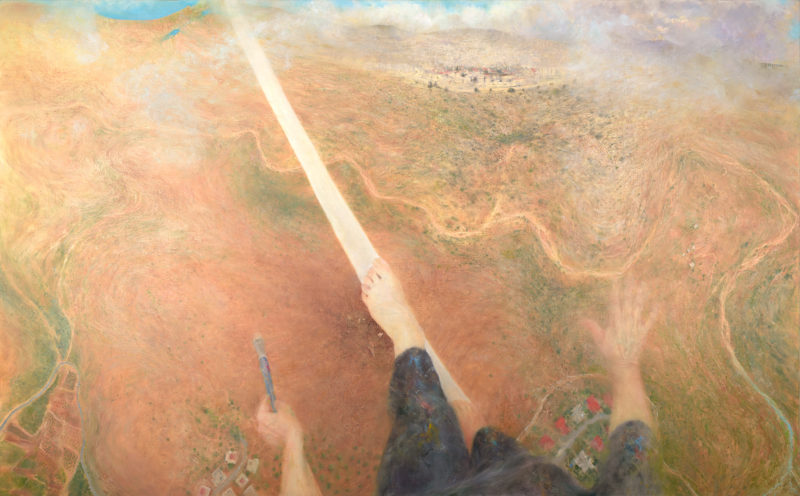
Land of Painting, 2019, oil on canvas, 105 X 170 cm/ 41″ X 67″
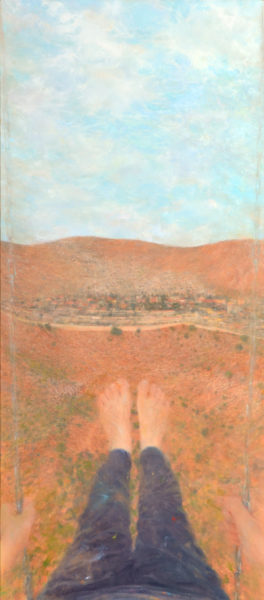
Swing 2, 2019, oil on canvas, 140 X 60 cm/55″ X 23.6″
bring together the image of a painter in her work clothes (I know her from somewhere) and views of Eshchar, Karmiel, Deir El-Assad in the Lower Galilee (that region also looks familiar). These works combine different points of view as well: from a close-up of a patch of earth to an aerial view, while fusing the vantage point of the figure at the edge of the painting with that of the spectator.
In conclusion, another interesting connection between portrait and landscape brings us back to the work of Moshe Kupferman: his signature often appears in unconventional ways in his work – at the center of the painting rather than in its corner, or with repeated signings in a single work – and in the ink sketches there are also hidden signatures within the lines of the drawing. This unusual work with the signature may be viewed as a kind of return to portraiture, transformed into a horizontal landscape representing the name of the artist’s lost family and made up of letters and language turned into imagery.

Moshe Kupferman, detail of an ink sketch with signature, 1969
February 2020
The opening of three exhibitions at the Kupferman Collection: Field of Vision; Aharon Messeg: Seeing Barefoot; and Moshe Kupferman and the Landscape. Closing June 2020. My article on Kupferman’s ink sketches (in Hebrew) is published on the Erev Rav website.
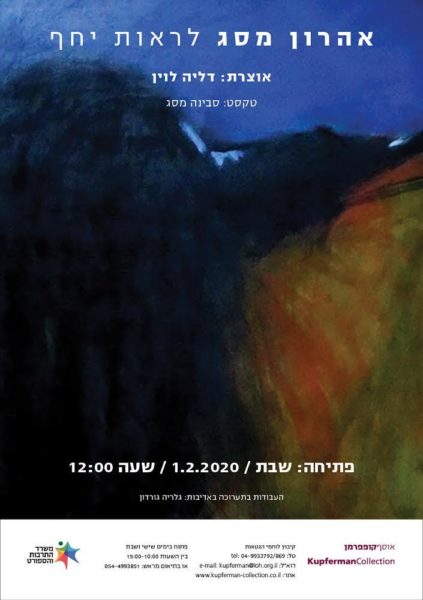
Aharon Messeg: Seeing Barefoot
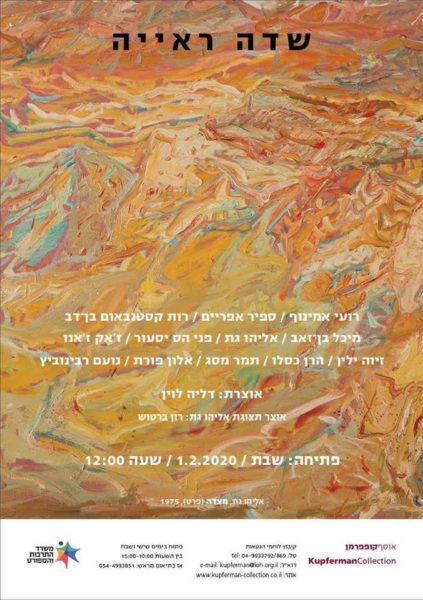
Field of Vision
Kupferman Collection hours are Friday-Saturday, 10:00 AM-3:00 PM or by appointment: 04-9933792 or kupferman@loh.org.il
2 Responses to “Kupferman, the Landscape and I”
Dear Ruth — a personal postscript: I was quite surprised when I realized that I very much wanted to own your landscape triptych, for several years now the last thing I see before I fall asleep and the first thing I see when I wake up. I’d never been attracted to landscapes. But then I understood; on some level, I was experiencing the paintings as calligraphy. Landscape as letters and language. Yours in admiration, Diana
Diana, I am so glad that you are the one looking at those paintings. I add that a third painting of mine in the upcoming show actually combines text with landscape. I will leave you curious until I have a good photo of it, or you come up to see the show (and visit) – whichever comes first.
Ruth
Comments are closed.